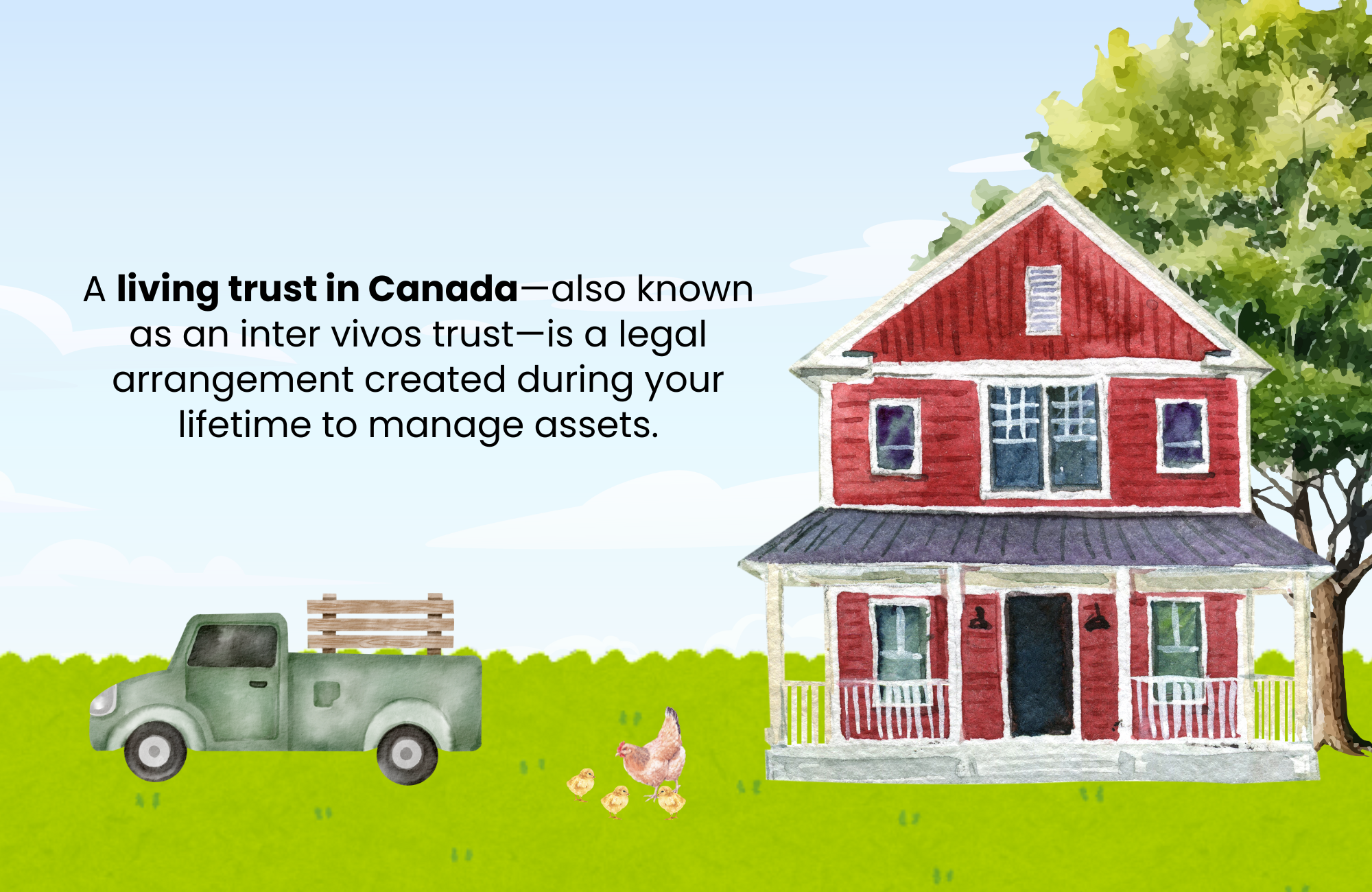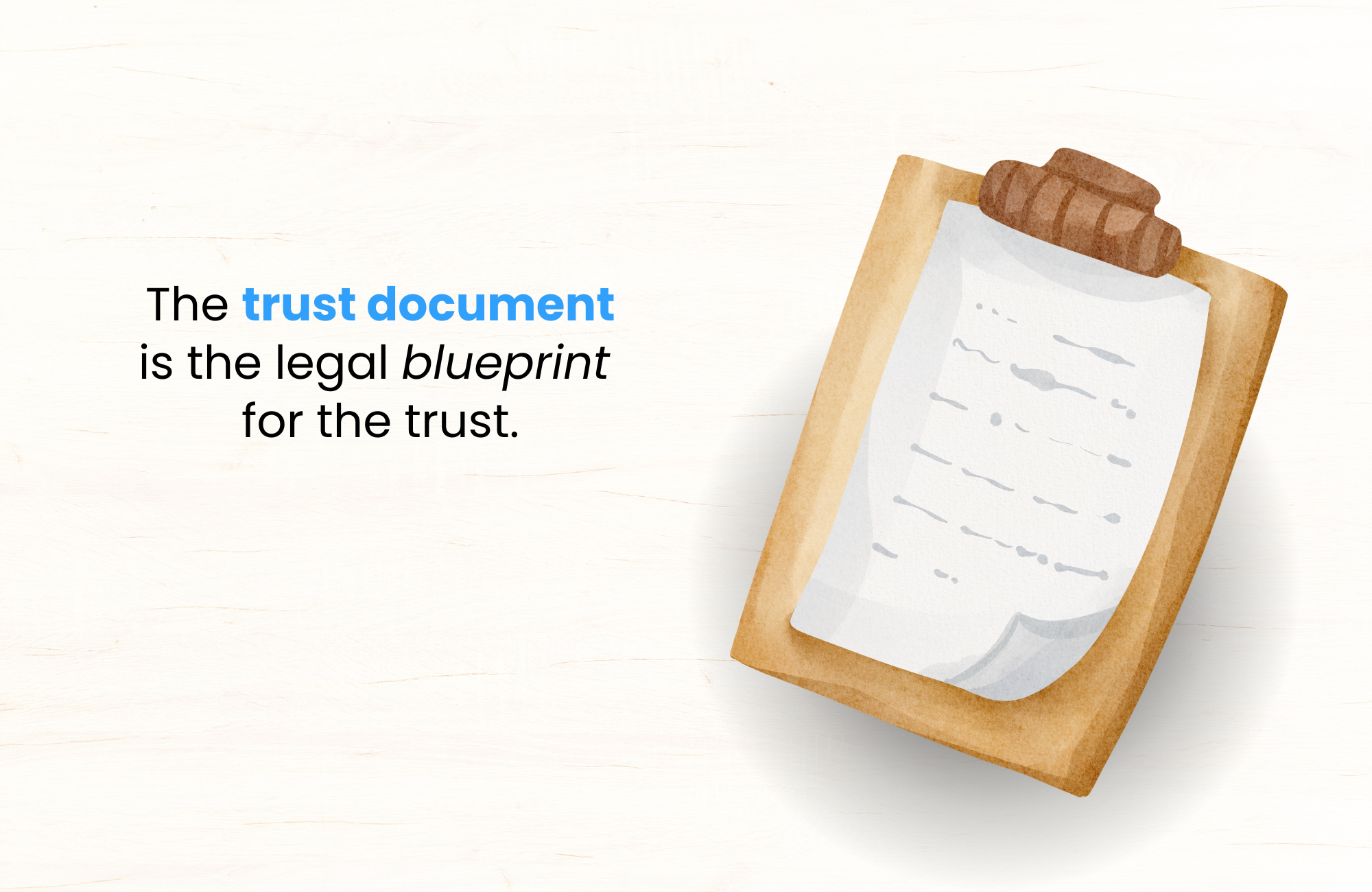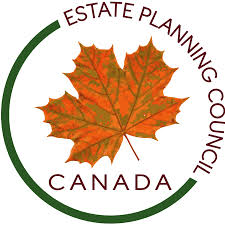Written by Ron Cooke, President & Founder of Strategic Wealth Protection Partners in Ontario, CEA®, Member of the Estate Planning Council Canada
How can I set up a living trust in Canada?
Before you set up a living trust (also called inter vivos trust), make sure you’re positive that it’s the right tool for your particular situation.
Most living trusts are subject to the 21 year rule, which means that after 21 years, the trust is deemed to have sold its capital assets at fair market value, which can trigger capital gains tax.
Next, if you’re sure that you need to set up a living trust, start by deciding whether you want a revocable or irrevocable trust. Next, choose a trustee to manage the assets and name your beneficiaries who are the people who will receive what’s in the trust.
Draft a trust agreement with the help of a lawyer to make sure it’s legally sound. You’ll need to transfer ownership of the chosen assets (like property or investments) into the trust for it to be valid. Finally, review the trust regularly and stay on top of tax rules.

Key Takeaways
- Living trusts avoid probate and give you control over distribution
- Trusts are taxed separately and require careful planning under the Income Tax Act
- The 21-year rule can trigger tax if not addressed in advance
- You must properly transfer assets into the trust for it to work
- Legal and financial advice is essential when setting up a trust in Ontario
What Is a Living Trust in Canada?
A living trust in Canada—also known as an inter vivos trust—is a legal arrangement created during your lifetime to manage assets.
It involves transferring assets into a separate legal entity, where they are governed by a written trust document. The person who sets up the trust (the settlor) appoints a trustee to manage the trust’s assets on behalf of the beneficiaries.
Living trusts are not subject to probate because the trust—not the individual—owns the assets. While they can be used for many purposes, living trusts require careful consideration of tax implications under the Income Tax Act.

Why You Might Want to Set Up a Living Trust
Setting up a living trust can help your estate avoid probate fees and minimize delays for your loved ones.
It allows for more privacy, since the trust avoids public probate court processes. A trust gives you control over when and how beneficiaries receive assets, which can be useful for minor children or vulnerable heirs. It also provides a structure for managing your finances if you become incapacitated.
For business owners or those with complex estates, it can create long-term potential tax benefits and ensure continuity across generations.
When to Set Up a Living Trust in Canada
| Situation | Why a Living Trust Helps |
| Avoiding Probate | Assets in a trust generally bypass the probate process, saving time, court fees, and maintaining privacy. |
| Maintaining Privacy | Unlike wills, trusts are not public documents—so your asset distribution stays private. |
| Planning for Incapacity | A living trust allows a trustee to manage your assets if you become mentally or physically incapable, without needing a court-appointed guardian. |
| Controlling Asset Distribution | You can set specific terms (e.g., staggered inheritance for children) rather than giving a lump sum through a will. |
| Owning Property in Multiple Provinces | A trust can help avoid multiple provincial probates if you own property outside Ontario. |
| Blended Families or Complex Beneficiaries | A trust can ensure fair and customized distribution among children, stepchildren, or multiple spouses/ex-spouses. |
| Minimizing Estate Disputes | Trusts can reduce the chance of will challenges or family conflict by clearly defining intentions. |
| Tax Planning (in limited cases) | Some trusts may offer tax deferral or income-splitting benefits, though they are less common with recent rule changes. |
Who Should Avoid Setting Up a Living Trust
A living trust is not ideal for everyone.
If your estate is small, with few assets and straightforward beneficiaries, the administrative burden may outweigh the benefits. Individuals who aren’t ready to relinquish control or deal with ongoing trust management should think carefully.
Also, those expecting significant changes to their personal or financial situation might benefit more from a will or other estate planning tools. As always, decisions should be made in light of the Income Tax Act and with professional guidance.
⭐ Related Read: Pros and Cons of Putting a House in a Trust in Canada

Key Roles Involved in a Living Trust
Settlor
The settlor is the person who creates the trust and transfers their assets into it. They outline the purpose and terms of the trust.
Trustee
The trustee is responsible for managing the trust assets according to the trust document and in the best interest of the beneficiaries. This role carries legal duties and fiduciary obligations.
Beneficiaries
Beneficiaries are the individuals or entities who benefit from the trust. They may receive income, capital, or both, depending on the terms outlined by the settlor.
What You Need Before You Set Up a Living Trust
- A clear list of assets you want to place into the trust
- Full legal names and details of your intended trustee(s)
- Names of all family members or others who will be beneficiaries
- Legal advice on the right type of trust (revocable or irrevocable)
- Your goals: asset protection, succession planning, incapacity planning, or tax efficiency
- Knowledge of potential tax benefits and risks under the Income Tax Act
- A preliminary understanding of how the probate process works in Ontario
- The willingness to document and formalize the trust with professional support

8 Step Process for Setting Up a Living Trust in Canada
A living trust can be a powerful estate planning tool, but it’s not a fit for everyone.
Before diving in, speak with an estate planning expert who can ensure this structure aligns with your long-term goals and avoids costly missteps.
Step One: Choose the Right Type of Trust
The first step is deciding between a revocable living trust and an irrevocable living trust.
A revocable living trust which offers flexibility. While an irrevocable living trust provides greater asset protection but cannot be changed once established.
Each has different tax implications, control features, and legal permanence. Your intended use—whether to plan for incapacity, shield assets, or reduce probate—will guide the choice. Always align this with your family situation and business or investment holdings.
Step Two: Choose the Trustee and Name Your Beneficiaries
Your trustee should be someone you deeply trust—often a family member or a professional advisor with a strong understanding of fiduciary responsibility.
You can name one or more trustees, and it’s wise to name a successor trustee. Decide who will benefit from the trust and when they will receive distributions. Beneficiaries might include children, grandchildren, or even a charitable organization, depending on your goals.
Step Three: Decide Which Assets to Include
Not all assets are ideal for trust ownership.
Common inclusions are real estate, non-registered investments, private company shares, and bank accounts. RRSPs and other registered accounts have different rules and often shouldn’t be transferred due to tax liability.
Each asset type must be assessed for both tax treatment and how it aligns with your long-term goals.
Step Four: Draft the Trust Agreement
The trust document is the legal blueprint for the trust.
It outlines the trustee’s powers, the rules for distributions, and how the trust should be administered. It should also address incapacity, death, and the eventual wind-up of the trust.
A well-crafted agreement reduces the risk of legal disputes or misinterpretation later.

Step Five: Transfer Assets Into the Trust
This step is critical: the trust has no power until you actually transfer assets into it.
That means re-titling ownership of property, shares, or financial accounts into the name of the trust. This must be documented and may require legal filings, corporate resolutions, or land title changes.
If it’s not done correctly, the trust may be challenged or ignored during the probate process.
Step Six: Understand Tax Rules
Trusts in Canada are governed by complex provisions in the Income Tax Act.
An inter vivos trust is taxed at the highest marginal rate unless income is distributed to beneficiaries. Every 21 years, the trust is deemed to have disposed of its capital property at fair market value, which could result in significant tax liability.
Certain planning techniques—like distributing capital before the 21-year mark—can reduce this burden. These rules require ongoing professional oversight.
Step Seven: Know Your Trustee’s Legal Duties
Trustees must act prudently, loyally, and in the best interests of the beneficiaries.
They must keep detailed records, report on trust activity, and follow the trust’s terms precisely. Mismanaging trust property or failing to disclose properly can result in legal action. Trustees also bear the responsibility for filing annual tax returns on behalf of the trust.
Choosing the right trustee is as important as structuring the trust properly.
Step Eight: Finalize the Trust with a Professional
Even with a strong outline, your trust must be finalized and legally enforceable.
That means reviewing the trust structure, the trust assets, and the agreement itself with both a lawyer and accountant. These professionals ensure compliance with Ontario regulations and the Income Tax Act, while also protecting against unintended legal or tax consequences.
Once finalized, the trust becomes a living legal structure that will serve your goals for years—if not generations—to come.

Common Questions
Is a living trust better than a will in Canada?
It depends. A living trust offers privacy and avoids probate, but a will may still be needed for remaining assets.
How much does a living trust cost in Canada?
Costs vary but typically range from $2,500 to $10,000 or more, depending on complexity and professional fees.
Do I need a lawyer to create a living trust in Canada?
Yes. A trust is a legal contract, and drafting it without legal guidance can lead to serious mistakes.
How long does it take to set up a living trust?
It usually takes a few weeks to a couple of months, depending on the complexity and how quickly documents are finalized.
What are the disadvantages of a living trust in Canada?
They can be costly, complex, and subject to the 21-year rule that may create tax consequences without proper planning.
Can I put my house in a trust in Canada?
Yes, but land transfer tax, mortgage obligations, and principal residence rules need to be considered carefully.
What is the biggest mistake parents make when setting up a trust for their kids?
Choosing the wrong trustee or failing to clearly outline distribution terms in the trust agreement.
What is a revocable living trust?
A revocable living trust allows you to change or revoke the trust during your lifetime while retaining control.
What is an irrevocable living trust?
An irrevocable living trust cannot be changed once established, offering stronger asset protection and some potential tax benefits.
What is a family trust?
A family trust is an inter vivos trust set up to hold and manage assets for the benefit of family members.
What is an inter vivos trust?
An inter vivos trust is a trust created during your lifetime, used to transfer assets outside of probate and offer planning flexibility.
What is the lifetime capital gains exemption?
This exemption allows qualifying business owners to shelter up to $1 million or more in capital gains from tax when selling shares.
Discover the Benefits of a Living Trust in Ontario
Are you an Ontario resident considering a living trust as part of your estate planning?
At Strategic Wealth Protection Partners, we’re here to guide you through every step of the process with expert advice and personalized support. Begin your estate planning journey today with a Living Estate Plan Consultation from our experienced team.
Our mission at SWPP is to help you create an estate plan that secures your legacy, shields your assets from unnecessary taxation, and ensures your loved ones are cared for. By designing a living trust tailored to your goals, our experts will help you build a plan that truly reflects your values and priorities.
Take control of your future—start planning today!
Schedule a Living Estate Plan Consultation
Planning your legacy is about more than numbers—it’s about ensuring your family remembers you and your values are honoured for many years to come.
Estate planning and trusts can feel overwhelming, especially if it’s your first time. That’s why we’re here.
With our simple, 5-Step Living Estate Plan, we make the process easy, helping you create a comprehensive estate plan or trust that protects your assets from taxes and probate fees while preserving your legacy. Tools like The Final Word Journal capture your story, wishes, and essential details like accounts and end-of-life plans, ensuring your family has clarity and comfort.
Take the first step today—schedule a consultation call and give your family the ultimate gift: peace of mind and the assurance they were always your priority.
Read More
If you’re starting your estate planning process, you may find these articles helpful:
- Living Trust Ontario Guide: What It Is & Do You Need One?
- Do Living Trusts Go Through Probate in Canada?
- How Does a Living Trust Work in Ontario?
About the Author
RON COOKE, PRESIDENT & FOUNDER OF STRATEGIC WEALTH PROTECTION PARTNERS

With over 30 years in financial services, I’ve seen the challenges families face when a loved one passes—lost assets, unnecessary taxes, and emotional stress. That’s why I created the Living Estate Plan, a comprehensive process to protect assets, eliminate estate and probate fees, and create legacies that are remembered for many years to come.
This plan ensures your family receives not just your wealth, but a meaningful reminder of your care and love. Tools like The Final Word Journal capture your story, wishes, and essential details, offering clarity and comfort during difficult times.
Your final gift should be more than money—it should be peace of mind, cherished memories, and an organized estate.
Schedule a Call
Schedule a 30-minute consultation call with Strategic Wealth Protection Partners.
Click HERE to schedule a consultation.









